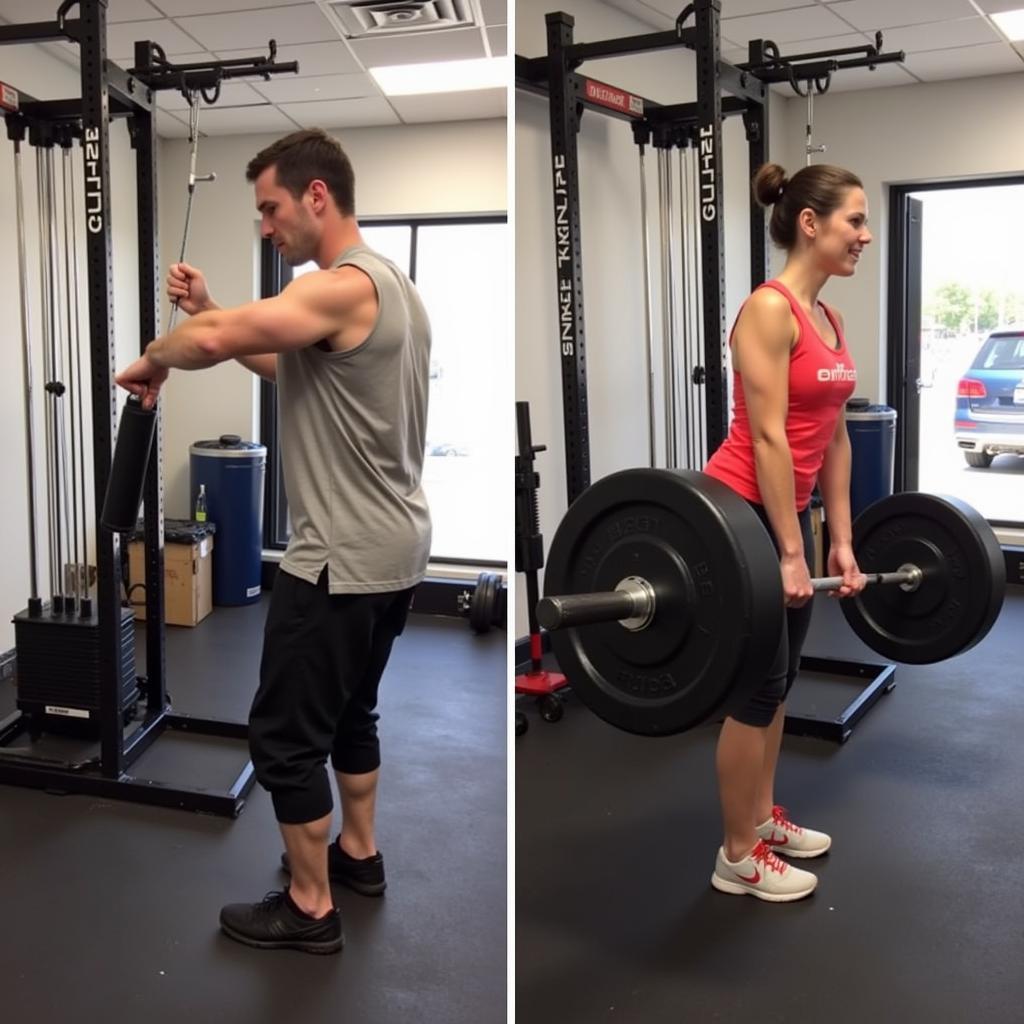For fitness enthusiasts, the debate between cable machines and free weights is a tale as old as time. Which one reigns supreme? Well, the truth is, there’s no one-size-fits-all answer. Both offer unique advantages, and the “better” option depends on your individual fitness goals, experience level, and preferences. Let’s delve into the world of cable machines versus free weights to help you determine the best fit for your workout routine.
Understanding the Difference: Cables vs. Free Weights
Before we crown a champion, it’s essential to understand the fundamental differences between these two training modalities.
-
Free weights, such as dumbbells, barbells, and kettlebells, are exactly what they sound like – free. They aren’t attached to any fixed apparatus, demanding stabilization and control throughout the exercise.
-
Cable machines, on the other hand, use cables and pulleys to create resistance. This setup allows for a more controlled range of motion and consistent tension on the muscles.
 Cable Machine and Free Weights Comparison
Cable Machine and Free Weights Comparison
Advantages of Cable Machines
Cable machines offer several distinct benefits that make them a valuable asset in any training program:
- Constant Tension: Cable machines maintain constant tension on your muscles throughout the entire range of motion. This constant resistance can lead to greater muscle fatigue and potentially enhanced muscle growth.
- Isolation and Muscle Activation: Cables excel at isolating specific muscle groups, allowing you to target them with precision. This is particularly beneficial for rehabilitation exercises or addressing muscle imbalances.
- Versatility and Exercise Variety: With adjustable cables, pulleys, and a variety of attachments, cable machines offer a wide array of exercise variations. This versatility keeps your workouts engaging and targets muscles from different angles.
- Beginner-Friendly: Cable machines provide a guided range of motion, making them generally safer and more accessible for beginners who are still developing proper form and technique.
Advantages of Free Weights
Free weights have long been a cornerstone of strength training, and for good reason:
- Functional Strength and Real-Life Movements: Free weights engage multiple muscle groups simultaneously, mimicking natural movement patterns and enhancing functional strength for everyday activities.
- Increased Core Activation and Stability: The inherent instability of free weights requires your core muscles to work overtime to maintain balance and control, leading to improved core strength and stability.
- Greater Calorie Burn: Free weight exercises often engage more muscle mass, potentially leading to a higher calorie expenditure compared to cable exercises.
- Progression and Scalability: Free weights allow for easy progression by simply adding more weight. This progressive overload is crucial for continuous strength and muscle gains.
 Free Weight Exercises for Strength and Stability
Free Weight Exercises for Strength and Stability
Which is Right for You?
The age-old question remains: Are Cable Machines As Good As Free Weights? The answer lies in your individual fitness goals and needs.
- For Beginners: Cable machines can be a great starting point as they promote proper form and reduce the risk of injury.
- For Muscle Growth (Hypertrophy): Both options can be effective, but free weights tend to recruit more muscle fibers due to the need for stabilization.
- For Sports Performance: Free weights often provide a better transfer to real-life, dynamic movements required in sports.
- For Rehabilitation or Injury Prevention: Cable machines offer a controlled environment that is ideal for rehabilitation and addressing muscle imbalances.
Combining the Best of Both Worlds
The good news is, you don’t have to choose one over the other! Incorporating both cable machines and free weights into your workout routine can provide a well-rounded approach to strength training.
- Use free weights for compound movements like squats, deadlifts, and overhead presses to build overall strength and power.
- Incorporate cable machines for isolation exercises to target specific muscle groups and address any weaknesses.
 Woman Performing a Cable Row for Back Muscles
Woman Performing a Cable Row for Back Muscles
Conclusion
Ultimately, the “better” option between cable machines and free weights depends on your individual needs and goals. Both offer unique advantages, and combining them can create a comprehensive and effective training program. Experiment, listen to your body, and have fun exploring the possibilities of both cable machines and free weights!